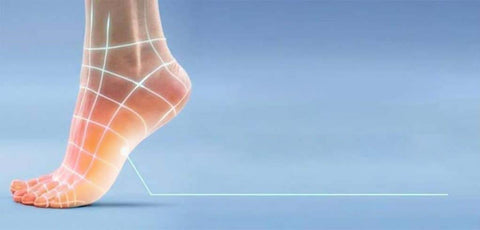
Have a question about warts and verrucas? Have a wart on your body, but not sure how to treat it? We may have an answer for you here. Read on to learn more about causes, symptoms, and treatments.
Warts are benign growths on the skin caused by the human papilloma virus (HPV) and can appear anywhere on the body, either alone or in clusters.1-5 The term “verruca” can also be used when referring to warts on the body, or when specifically referring to a wart on the sole of the foot (more technically known as “verruca plantaris” or simply plantar wart).2,6
Warts and verruca can be easy to identify, but their appearance can vary depending on where they are on the body.1,2,4
Warts on the hands, elbows or knees are often raised, rough and scaly, and can range in size from pinhead to pea size.6,7 Their colour can be the same as your skin and they are not usually painful – although they may itch sometimes.3-5,7
A verruca can appear as a hard lump on the sole of the foot.7 It may be discoloured with a small black dot in the centre.1,3,7,8 A verruca on the sole of the foot can cause pain or tenderness when walking or standing.1,5,7
Warts and verrucas are caused by the human papillomavirus (HPV).1,2 There are over 150 types known strains of HPV that can cause different types of warts and verrucas.2
These viruses are more likely to cause a wart or verruca if they come into direct contact with broken or cut skin.3,5,7,8 It can take up to a year after infection for a wart or verruca to appear on your skin.2,5
You can become infected directly from skin-to-skin contact or indirectly from touching contaminated objects.2,7 Warts and verrucas can also spread from one part of your body to another. 1,8
Anyone can develop warts, but factors that increase the risk include: frequently getting the hands wet, hands or feet that sweat heavily, swimming in public swimming pools and walking barefoot in areas where others have walked barefoot, such as communal showers and changing rooms.4,7,8
For many people, warts and verrucas will often clear up on their own over time.2 If however, they cause discomfort or disrupt your day-to-day activities, there are various wart removal products available.1-3
Two commonly used treatment options are salicylic acid and cryotherapy.1-3
Salicylic Acid5,8,9
Cryotherapy5,8,10,11
If you are concerned about your wart or verruca or if your wart or verruca persists after home treatment, you should speak to your GP.
ALWAYS READ THE LABEL. USE ONLY AS DIRECTED. See your doctor if symptoms persist.
Warts and verrucas are a common occurence.2,4 With that said, there are some steps you can take to reduce your risk of developing a wart:4,7,8
A simple maintenance routine can help to keep the skin on your feet healthy:12